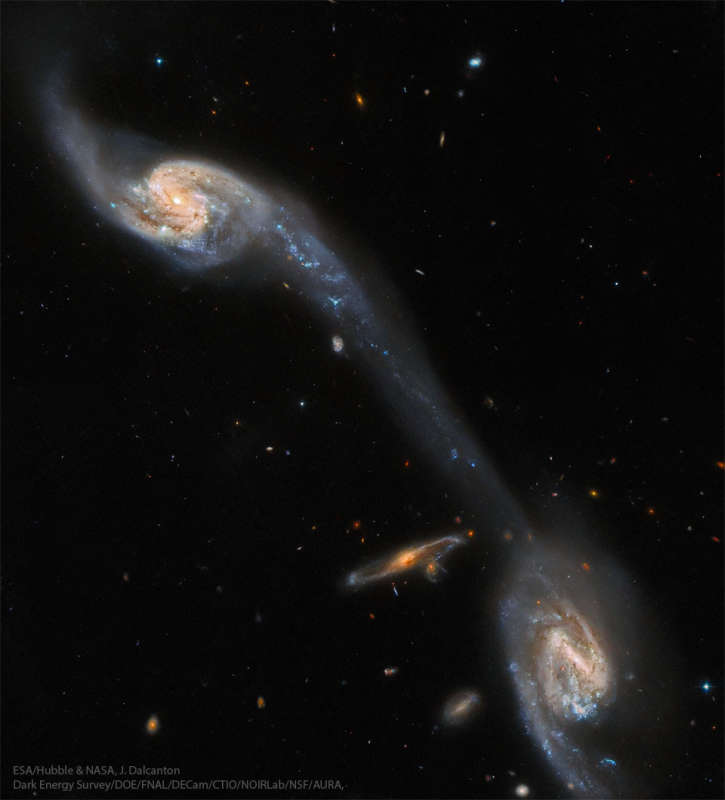Credit & Copyright: ESA/Hubble,
NASA,
Dark Energy Survey/DOE/FNAL/DECam/CTIO/NOIRLab/NSF/AURA,
J. Dalcanton
Explanation:
How many galaxies are interacting here?
This grouping of galaxies is called the
Wild Triplet, not only for the
discoverer, but for the number of bright galaxies that appear.
It had been assumed that all three galaxies,
collectively cataloged as
Arp 248, are
interacting,
but more
recent investigations reveal that only the
brightest two galaxies are sparring gravitationally:
the big galaxies at the top and bottom.
The spiral galaxy in the middle of the
featured image by the
Hubble Space Telescope is actually far in the distance,
as is the galaxy just below it and all of the other
numerous galaxies in the field.
A striking result of these
giants jousting is a tremendous
bridge of stars, gas, and
dust that stretches between them -- a bridge almost 200,000
light-years long.
Light we see today from Wild's Triplet left about
200 million years ago, when
dinosaurs roamed the Earth.
In perhaps a billion years or so, the
two interacting galaxies will merge to form a
single large spiral galaxy.
1999 2000 2001 2002 2003 2004 2005 2006 2007 2008 2009 2010 2011 2012 2013 2014 2015 2016 2017 2018 2019 2020 2021 2022 2023 2024 2025 |
Yanvar' Fevral' Mart Aprel' Mai Iyun' Iyul' Avgust Sentyabr' Oktyabr' Noyabr' Dekabr' |
NASA Web Site Statements, Warnings, and Disclaimers
NASA Official: Jay Norris. Specific rights apply.
A service of: LHEA at NASA / GSFC
& Michigan Tech. U.
|
Publikacii s klyuchevymi slovami:
interacting galaxies - vzaimodeistvuyushie galaktiki
Publikacii so slovami: interacting galaxies - vzaimodeistvuyushie galaktiki | |
Sm. takzhe:
Vse publikacii na tu zhe temu >> | |
